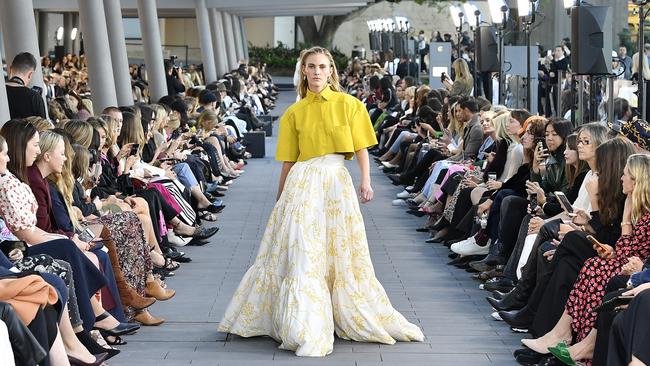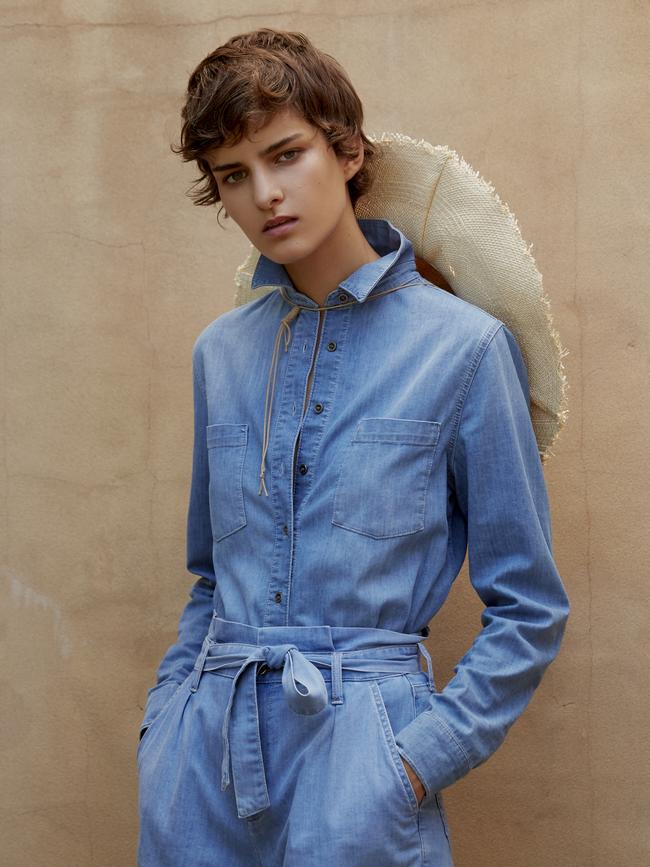Fashion has become so last season
COVID-19 is blowing winds of change through the world of fashion.

This week would have been Australian Fashion Week. Australian designers from across the country would have been presenting their resort collections to the industry, including local and international buyers and media. We would have cooed over the colourful trans-seasonal collections that would arrive in stores around the world from November.
Then COVID-19 happened. And the fashion industry stopped. Sort of. Certainly, it has slowed down. Fashion events have been cancelled from Sydney to St Petersburg, and the economy has taken a major blow. Everyone in the industry is trying to work out a way back — hopefully for the better in an industry many consider broken.
One thread of the industry fabric is seasonal deliveries. There are many who hope one outcome of the current crisis is that fashion seasons will finally realign with the actual seasons to which they are meant to cater.
How refreshing it would be to walk into a Melbourne department store in February to find a late-summer dress rather than a cashmere coat that has just arrived?
Global designers from Donatella Versace to Giorgio Armani have been speaking up about the issue recently, and they wouldn’t be the first. “To be honest with you, I like the idea of having a slower pace in terms of seasonality,” Versace told Women’s Wear Daily, “of having in the windows cashmere in winter and swimwear in summer.”
The pandemic has forced the hand of many in the shorter term. With manufacturing supply chains from China to Europe affected because of the closure of factories and mills, collections were delayed and deliveries pushed back.
“For the first time in a long time we are going to get clothes arriving in store at the right time,” says Simon Lock, founder of virtual showroom Ordre and, in the 1990s, of Australian Fashion Week.
Along with the Australian Fashion Council, Ordre is offering a sales lifeline to Australian designers left high and dry without this year’s fashion week.
“There’s a real chance for retail alignment here, and if retailers keep that timing in mind when they place their next orders for spring-summer during the next ordering season, they could put the retail cycle back to where it’s supposed to be,” Lock says. Quite aside from a practicality viewpoint for consumers, there is another advantage for fashion businesses, he says: “Collections would stay at full price for longer, there would be no discounting early in the season.”

This approach to retailing is naively called “Buy Now, Wear Now”, a concept that has been bandied about for five years or so. It’s the retail equivalent of “See Now, Buy Now”, a consumer concept in which collections are shown on the catwalk as they arrive in store.
Many Australian designers are keen to see a shift towards this model. And they have to be even more nimble and accommodating in some ways, especially if they have a truly global business. With opposing hemispheres and seasons, one half of the world is always out of synch with the other, no matter what season you are offering. For many Australian brands in particular that has meant they lean towards more trans-seasonal items, which is one reason that resort and pre-autumn collections have been increasingly important globally as they fall between the two major seasons and work in either hemisphere.
While David Jones general manager womenswear Bridget Veals concedes that the opposing hemisphere deliveries “sometimes works well for us”, change would be welcome.
“I think absolutely a reset needed to happen and I think it will happen this season,” Veals tells The Australian. “Most brands have had to move out deliveries.”
She says trans-seasonal collections have become a core focus for the department store to deal with seasonal discrepancies. “They are longer-lasting collections and the product has more longevity.”
Ginger & Smart, co-founded by sisters Alexandra and Genevieve Smart and whose business is currently focused on Australia, is one brand that intends to move in the Buy Now, Wear Now direction after the pandemic subsides, despite initially having such change forced on it. “Our winter collection is hopefully going to launch at the end of this month,” Alexandra Smart tells The Australian. “It should have been March. But it’s a really good thing, the winter collection will be delivered when the season changes.
“The general feeling in the industry is that it’s a really good direction. We can be more in control and keeping product off sale for as long as possible, making the seasons more profitable. It will make a big difference to a lot of businesses.”
Genevieve Smart believes there will be a shift towards brands doing “drops”, smaller collections delivered according to their own timelines and production schedules.
“It will be less about seasons,” she says, “which implies that (this season’s) fashion is not relevant from the season before. The idea of drops versus seasons is going to be the shift.”
Given that many brands do anywhere from four to eight collections a year in the current model — a huge upswing in the past decade from the traditional two seasons, spring-summer and autumn-winter — the idea of bimonthly drops, for example, isn’t such a stretch.
Adrian Norris, co-founder of Aje, has always been a “vocal supporter” of realigning collections to seasons, and he and business partner Edwina Forrest have already managed to navigate this via monthly drops of product within four overarching collections that are outwardly denoted by name rather than season.

“I still believe it’s one of the reasons our business has done so well,” Norris says. “We threw our hands up in the air about five years ago, asking, ‘Why are we delivering winter stock in February? What is going on in the world?’ Our customer is not shopping winter in February. She might start to think about it in April and May. We look at each month as its own month. And we deliver what we believe is seasonally appropriate stock at the right time.”
Outland Denim, which launched only four years ago, is about to pivot its business from two seasons a year to six bimonthly drops as a result of the pandemic downturn. “We’ve just taken the plunge,” founder James Bartle tells The Australian. “I hope it’s the right move. It certainly feels like the right move because it feels like everything is about to shift (after the COVID-19 crisis).”
Bartle launched with an ethical and sustainable ethos: to train and employ women in Cambodia to keep them out of poverty and the human trafficking cycle.
The new system means its manufacturing schedule also will be more even throughout the year. Smaller drops will allow the brand to be more nimble in reacting to orders, which can be placed closer to the time that they arrive in stores.
“It really ticks all the boxes,” adds Bartle. “It takes the risk out for retailers, who can’t be stuck with stock and push it out on sale all the time. The same for us; we don’t want to be reducing prices on anything we sell. No one does.”
Dropping clothing when customers want it seems to be logical and what the industry wants. Whether the forced change continues in the longer term remains to be seen.

To join the conversation, please log in. Don't have an account? Register
Join the conversation, you are commenting as Logout